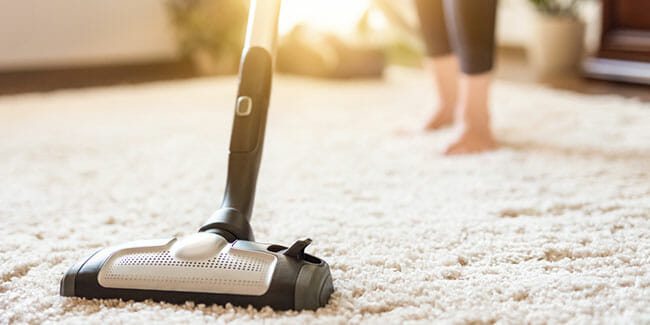If you are in the market for a new pet vacuum cleaner, you may have encountered the well-known paradox: nearly all pet vacuum cleaners seem awfully similar to a layman – and yet there are enough types and subtypes to make your head spin. With so many options at your disposal and without an easy way to tell them apart, it may be hard to figure out where to begin and how to know what kind of pet vacuum you actually need.
To make matters simpler, we have designed this quick guide that provides an overview of the most popular types of pet vacuum cleaners. Discover the main strengths and weaknesses of each of the common pet vacuum types below and decide which one best suits your unique needs.

Upright Pet Vacuums
As you can see from our top list of the best pet vacuum cleaners, most of the highest-rated pet vacuums belong to the category of uprights. That is because uprights usually have greater suction power than other types of vacuums and they make cleaning floors and carpets a piece of cake, especially if they have a brush roll switch that lets you turn off the brush when vacuuming bare floors.
Upright pet vacuum cleaners often come with handy accessories that allow for efficient removal of pet hair from stairs, upholstery, and other above-floor surfaces. Thus, an upright pet vacuum can be a solution to all your pet hair troubles, especially if it features a swiveling head and its hose is long enough. The only trouble with uprights is that they are usually heavier than other types of vacuums and they can be rather bulky. Fortunately, there are models that are pretty compact and lightweight, like Bissell Symphony and Bissell Powerglide.
Stick Pet Vacuums
The main advantage of stick pet vacuums is that they are lightweight and easy to navigate. They are easy to store and incredibly handy when you are short on time and just want to make a few quick passes to eliminate the most visible dirt and pet hair.
However, their motors are not as powerful as those in uprights and they usually produce unimpressive results on carpets. Furthermore, they generally do not come with the useful accessories that we mentioned when we spoke about uprights because they are built to be light and save space.
Canister Pet Vacuums
In canister pet vacuums, the engine, filter, and dust bags are all contained inside a unit referred to as the canister and the cleaning nozzle is attached to a wand that is in turn attached to the canister through a hose. The most prominent qualities of canister pet vacuums include great maneuverability and versatility. These vacuums easily remove pet hair from hard-to-reach areas like corners and underneath the furniture. They are also good on bare floors.
On the other hand, canister pet vacuums are inferior to uprights when it comes to removing pet hair and dirt from carpets. They are usually bulky and you have to drag the canister around as you vacuum, which can be annoying.
Handheld Pet Vacuums
Handheld pet vacuums are convenient and versatile and the fact that they are small, lightweight, and usually cordless means that you can carry them around with ease, use them to vacuum everything in your home, and even remove pet hair from car interiors.
However, vacuuming floors and carpets with a handheld vacuum can take time and hurt your back, especially if you live in a large house or apartment. Plus, their suction power is often severely limited in comparison to uprights.
Robotic Pet Vacuums
Robotic pet vacuums are attractive because they do all the work on their own. The best ones are easy to program and come with a remote control and they are great if you have literally no time to vacuum. However, as it is usually the case with automated processes, there are some flaws and glitches that you should keep in mind.
If you want your home to be spotless, you should not get a robotic pet vacuum because vacuums of this kind always leave some dirt and pet hair behind. Unlike a human, a robotic pet vacuum will not look back, see it has missed a spot, and return to finish the job. They are also unable to clean upholstery, stairs, curtains, and above-floor surfaces in general. They only work on floors and carpets and their performance on soft and high-pile carpets is not that great. Plus, they can encounter obstacles they are unable to deal with, like wires, narrow spaces, and so forth. A robotic pet vacuum is only a good choice if you have a spacious home with plenty of bare floors to clean.
What Type Of Pet Vacuum Cleaner Should You Choose?
Essentially, it all depends on your needs. If you primarily seek lightness and maneuverability, a stick pet vacuum or a handheld pet vacuum can satisfy your needs. Alternatively, you can get a canister pet vacuum and enjoy great maneuverability combined with superior suction power.
If you hate vacuuming floors, you should go with a robotic pet vacuum. However, in that case, you need to have an additional vacuum to deal with pet hair and dirt on upholstery, stairs, and other above-floor surfaces.
Finally, if you have the time to vacuum at least once or twice a week and you value great suction power and efficient pet hair removal, a good upright pet vacuum like Eureka Airspeed Unlimited is the best choice.
